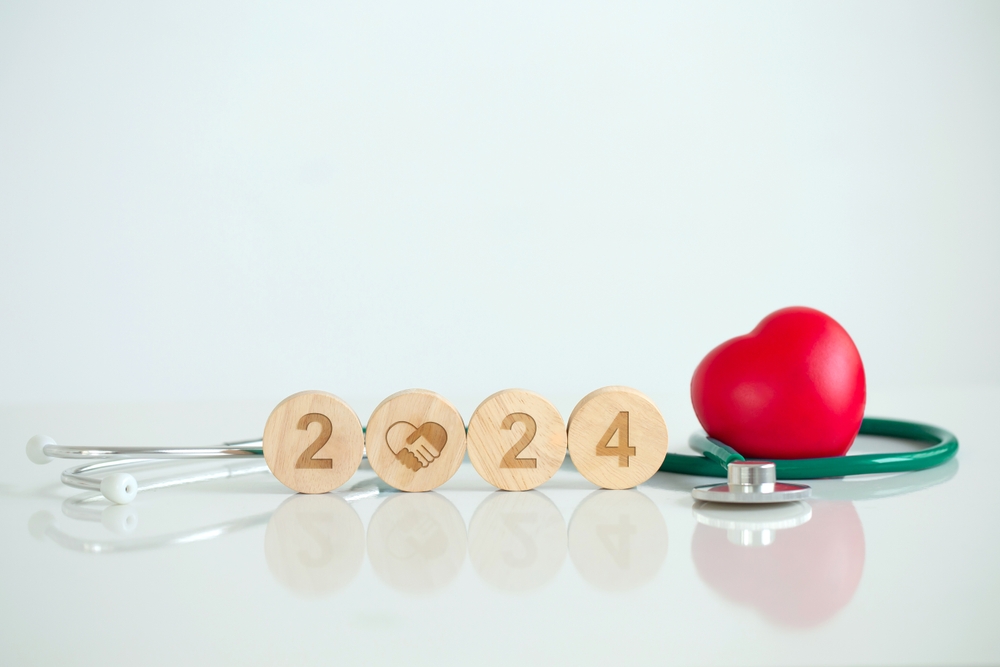Gut Health, Fasting, and More: Health and Wellness Trends for 2024
Exercise and NutritionPosted:

In 2023, health and lifestyle trends included micro-workouts, mouth taping, and diet supplements. But as the new year rolls on toward spring, new trends are emerging.
Kat Galeos, RDN, a Community Outreach dietitian with Lee Health, helps us sort out the latest in diet, nutrition, and fitness developments.
Read on to get the inside scoop about plant-based diets, functional foods, sustainable eating, intermittent fasting, gut health, fitness wearables, and weight-loss drugs.
Gut health
Gut health (digestive system) is a trend because good food choices can help your body prevent chronic diseases and support good immunity and overall health and well-being.
Kat notes that the gut-brain connection, the link between the brain and gut, plays a vital role in how we think, feel, and digest our foods.
“Our digestive system is responsible for breaking down food, absorbing nutrients, and eliminating waste from the body,” Kat says. “Nutrition profoundly impacts gut health, influencing the composition and activity of the gut microbiome, as well as various physiological processes within the gastrointestinal tract (GI) tract.
“The gut contains bacteria known as our microbiome,” Kat explains. “The gut microbes produce neurochemicals that are delivered to the brain via nerve pathways.
"The connection goes both ways, too. Research suggests these neurochemicals can affect our neurological, emotional, and mental health. The best type of diet for a healthy gut-brain connection emphasizes a variety of whole foods and plants.”
Kat also suggests these tips to keep your gut-brain link healthy:
- Try adding probiotics to your diet. Probiotics increase the good bacteria in your gut. Yogurt, kefir, kombucha, fresh sauerkraut and supplements are all good sources of probiotics.
- Chew your food thoroughly. Aim to chew each bite at least 30 times before swallowing. It can help ease the digestive process.
- Avoid too much stress, which can negatively affect gut health. Stress can disrupt the balance of gut bacteria, leading to digestive conditions such as gastric reflux disease (GERD) and irritable bowel syndrome (IBS). Also, stress can lead to inflammation in the body and cause issues such as bloating, constipation, and diarrhea. Yoga and meditation can help reduce stress and anxiety.
- Eat more fiber. Aim for 25 grams each day. It can also control blood sugar levels.
- Stay hydrated. Drinking at least eight 8-ounce glasses a day can help maintain good digestive health.
- Talk with your doctor if you experience IBS symptoms such as abdominal pain or cramps, frequent diarrhea, constipation, or both. IBS affects 10 percent to 15 percent of U.S. adults.
- Be mindful of consuming red meat and processed meats because they contain nitrates and nitrites, which are carcinogens (cause cancer).
“The bottom line is to trust your gut instincts,” Kat says. “What’s happening in your gut directly affects your health.”
Diets and nutrition
Plant-based diets, functional foods, sustainable eating, and intermittent fasting are all trends based on the foods you’re eating.
- Plant-based diets focus on meeting your daily nutritional needs by eating mostly plant-based foods, such as fruits and vegetables, beans, whole grains, nuts and seeds.
- Functional foods, called nutraceuticals, provide health benefits beyond their nutritional value. “Conventional functional foods are typically high in important nutrients, including vitamins, minerals, healthy fats, and fiber,” Kat says. “For example, whole grains like oatmeal offer excellent health benefits.”
In addition to conventional functional foods, fortified functional foods may include supplements for additional ingredients to help protect against chronic disease and improve overall health. For example, milk is fortified with vitamin D because only a few foods naturally contain vitamin D.
LISTEN: Plant-based diet: what you need to know
By filling your diet with both conventional and fortified foods, you’ll get the nutrients you need while protecting against nutrient deficiencies, Kat notes.
- Sustainable eating focuses on eating foods that have a low impact on the environment. This means getting most of your nutrition from plants such as fruits and vegetables. Sustainable eating does not include red or processed meat, as the production of these meats greatly impacts the environment through greenhouse gas emissions.
- Intermittent fasting is a dietary plan where you switch between fasting and eating on a regular schedule. For example, you may eat for 8 hours and then fast for the next 16 hours. Intermittent fasting is a way to manage weight and prevent or even reverse some forms of disease.
Fitness wearable devices
Fitness wearables are technology devices you can wear to track your physical fitness progress and monitor your daily physical activity.
Fitness wearables can:
- Track your daily steps
- Monitor your heart rate
- Count the number of calories burned
- Monitor your sleep patterns
“Fitness wearables can help you stay motivated to reach your health and lifestyle goals,” Kat says. “The metrics you track can help you make more informed decisions about your lifestyle as well as improve your fitness routines and sleep.”
READ: Can wearable technology help you hit your health goals?
Weight-loss drugs
Prescription weight-loss drugs like Ozempic and other GLP-1 agonists are medications specifically approved for weight management in adults with certain health complications linked to being overweight or obese.
READ: New Year Goals: Will Weight-Loss Drugs Work for You?
Prescription weight-loss drugs work by mimicking the hormone GLP-1, which is released naturally by the body after eating to promote feelings of fullness and satisfaction. These drugs activate receptors in the brain that regulate appetite and food intake. This suppresses appetite, helping you feel full sooner and longer after eating.
According to FDA guidelines, these drugs should only be considered if you are non-diabetic, have tried lifestyle changes and have not lost at least 5 percent of your total body weight if you meet one or more of the following conditions:
- Have a body mass index (BMI) equal to or greater than 30. BMI is a calculation that estimates how much body fat a person has based on their weight and height.
- Have a BMI equal to or greater than 27 with one or more obesity-related conditions, such as asthma, high blood pressure or diabetes.
Prescriptions for weight-loss drugs have soared. In the final three months of 2022, more than 9 million prescriptions for Ozempic and weight-loss drugs were written, reports The Washington Post. More than 50 prescription weight-loss drugs are in clinical trials, meaning this trend won’t be going away any time soon.
Boost your gut health with this recipe:
Purple Cabbage and Sauerkraut Slaw
Adapted from the Minimalist Baker
Serves 4
"This salad is delicious and fresh-tasting. The dill and green onion add an extra layer of YUM! I hope you love this recipe as much as I do. Remember to buy sauerkraut from the refrigerator section at your local supermarket."
Ingredients:
- 1/2 medium red cabbage (6 cups finely chopped)
- 3/4 cup sauerkraut well drained
- 1/2 English cucumber sliced
- 1 granny smith apple sliced into thin bite-sized pieces
- 1/2 cup green onion chopped
- 1 tablespoon dill finely chopped
- 4 tablespoons extra virgin olive oil
- 2 tablespoons apple cider vinegar or white wine vinegar (adjust as needed)
- 1/2 teaspoon sea salt or to taste
- Dried currants or cranberries (optional)
- Toasted almonds or walnuts (optional)
Instructions:
- Finely chop cabbage and transfer it to a large mixing bowl.
- Thoroughly squeeze sauerkraut by the fist-full to remove excess moisture until you have 1/2 cup of squeezed sauerkraut, then add it to the salad bowl.
- Add the sliced cucumber, granny smith apple, chopped dill and green onion.
- Drizzle the salad with 4 Tablespoon extra virgin olive oil, 1 tablespoon white vinegar and 1/2 teaspoon sea salt. Toss the salad well to combine, and add more salt and/or vinegar to taste.

